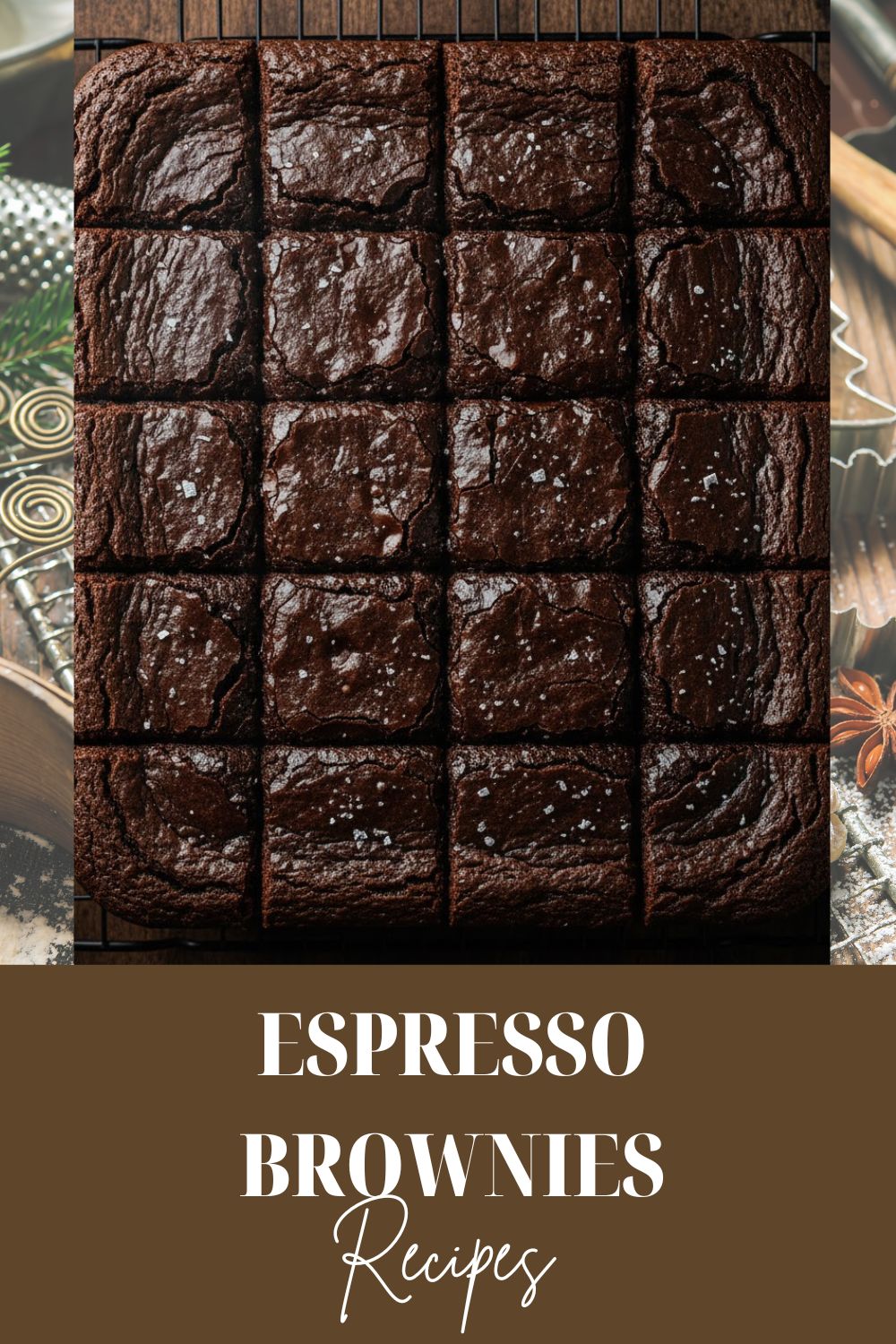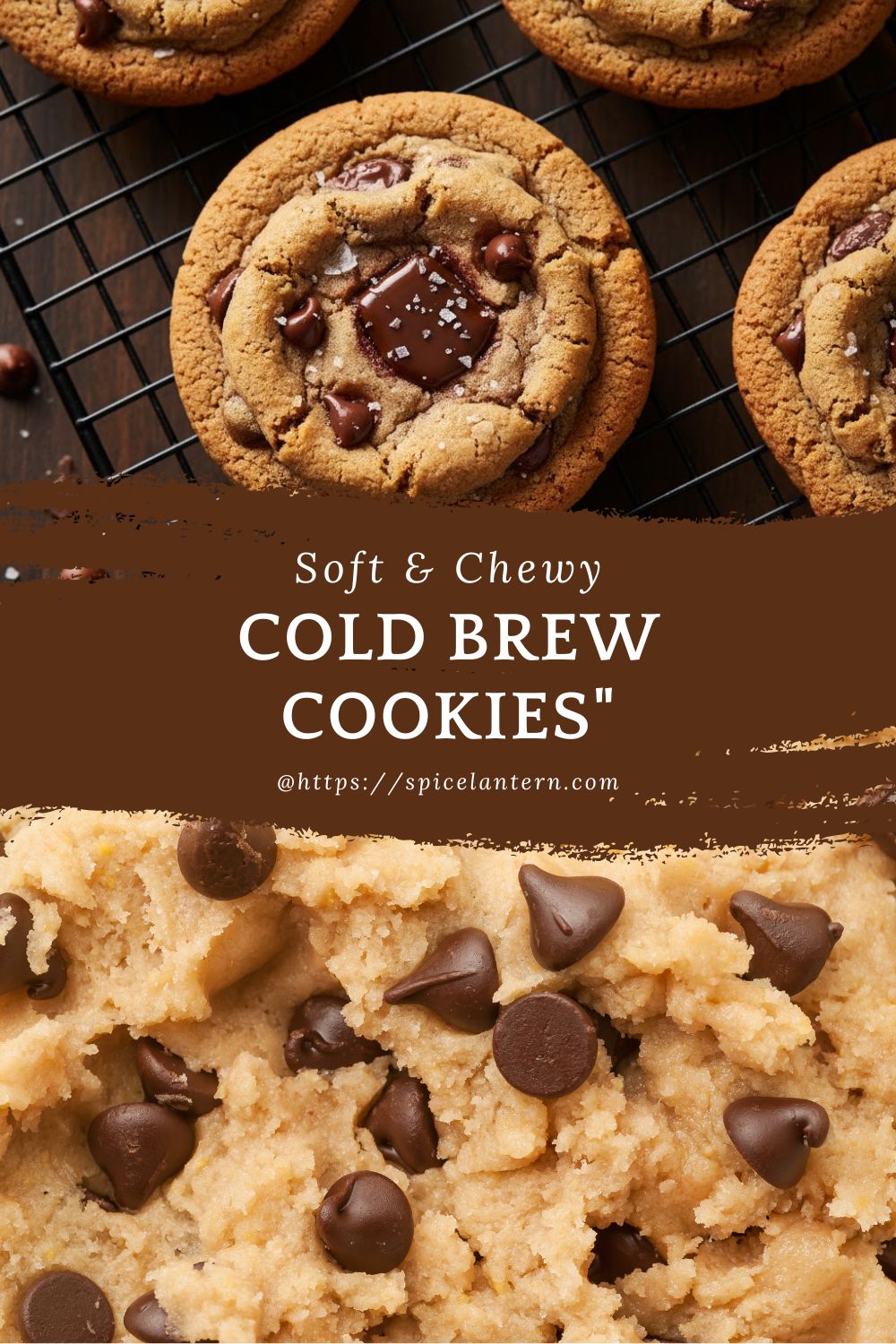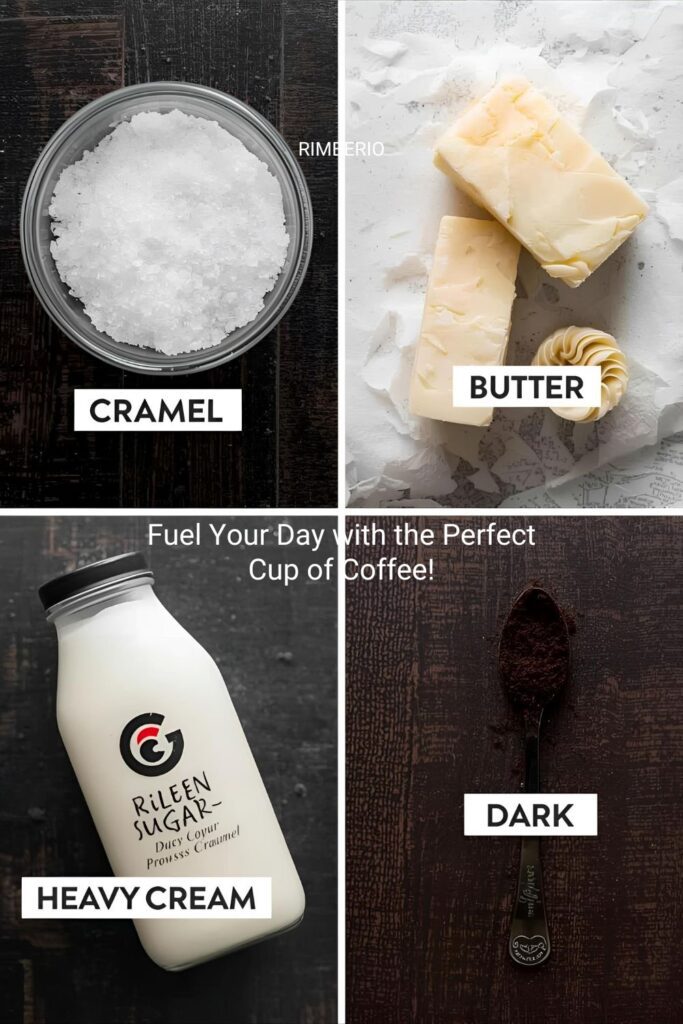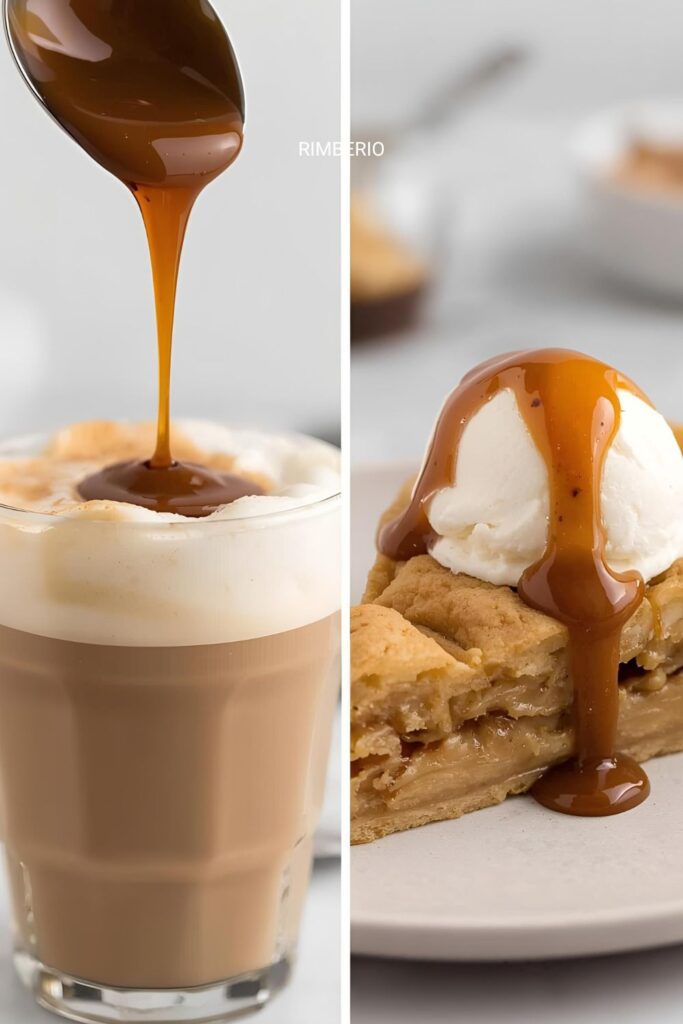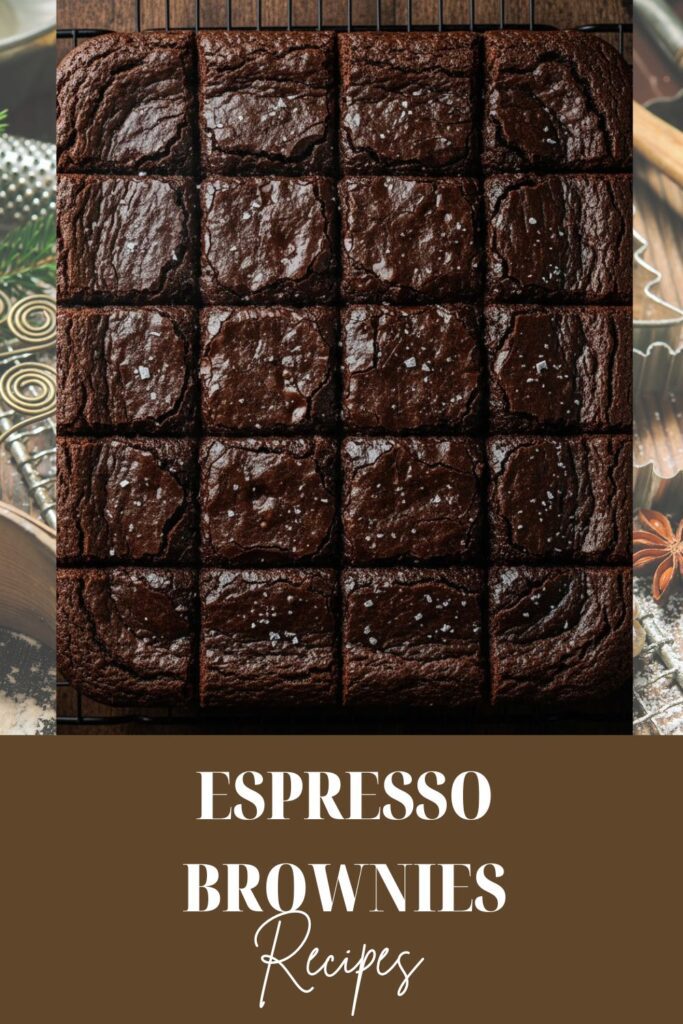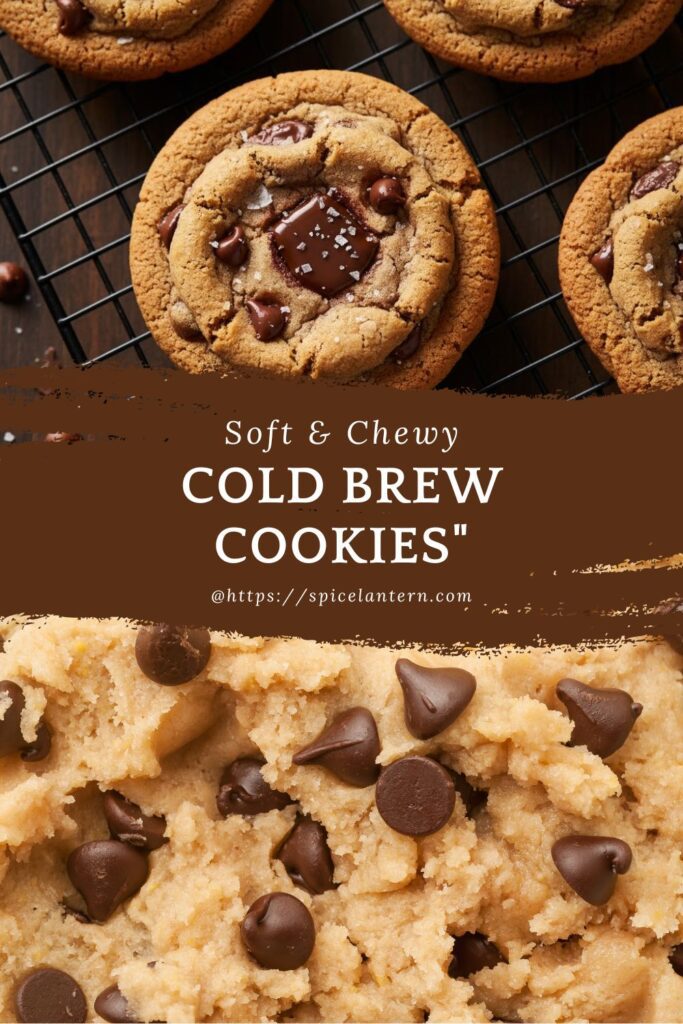Ditch the Syrup: The Ultimate, Silky-Smooth Coffee Caramel Recipe
Let’s get something straight: store-bought caramel is a sad, vaguely brown, overly sweet disappointment. It tastes like high-fructose corn syrup and regret. And if you’re using basic caramel when you could be using coffee caramel? Honey, you are missing out on life’s finest pleasures. You need to upgrade immediately. Say hello to Coffee caramel.
This isn’t just a sauce; it’s a personality trait. It has the buttery richness of classic caramel, but with a deep, sophisticated, bitter edge from the coffee that cuts the sweetness perfectly. It’s what you drizzle over ice cream, use in fancy lattes, or just eat with a spoon when nobody is watching. (I’m not judging; I keep a jar in the fridge for emergencies.) Ready to conquer the kitchen and impress yourself? Of course, you are.
Why This Recipe Is Awesome (It’s Liquid Gold)
Why should you stop whatever you’re doing and make this right now? Because it’s surprisingly easy, and the flavor payoff is astronomical. You transform four simple ingredients into liquid gold that tastes gourmet. It elevates every single dessert or beverage it touches. Vanilla ice cream? Now it’s a salted caramel latte in a bowl. Basic brownie? Hello, coffee-infused decadence!
Caramel often gets a bad rap for being difficult, but we’re using the wet method here, which is much more foolproof than the dry method. We minimize the chances of a grainy, burnt disaster. Plus, the coffee adds an extra layer of complexity that screams “I’m a genius chef.” It’s a win-win, IMO.
☕ The Core Ingredients You Need
Perfection requires precision, especially when dealing with hot sugar. Grab your measuring cups and your favorite brew.
- 1 cup Granulated Sugar: The foundation. White granulated sugar works best for color control.
- 1/4 cup Water: Crucial for the wet method! It helps the sugar dissolve evenly and prevents scorching.
- 1/2 cup Heavy Cream: Warm it up slightly! Cold cream causes a violent, volcanic reaction (and crystallization). Warm cream is key.
- 4 Tbsp. Unsalted Butter: Cut it into 4 pieces. Room temperature butter is easier to incorporate.
- 1 Tbsp. Strong Espresso Powder or Instant Coffee: This is the coffee part. Use a high-quality powder for the best flavor.
- 1/2 tsp. Flaky Sea Salt (Optional, but highly recommended): Salted caramel is life. Don’t fight it.
Key Substitutions:
- Heavy Cream Swap: Full-fat coconut milk (canned, unsweetened) works for a non-dairy version, but the texture will be slightly thinner.
- Coffee Swap: Brewed espresso can work, but you need to reduce the heavy cream slightly to compensate for the added liquid. Powder is safer!
- Sugar Swap: Brown sugar will create a darker, molasses-flavored caramel, which is great, but won’t give you that clear caramel flavor.
🛠️ Tools & Kitchen Gadgets Used
Caramel is a high-heat, fast process. You need tools that are up to the task and keep you safe.
- Heavy-Bottomed Saucepan (Medium Size): Essential! A heavy bottom distributes heat evenly and prevents the sugar from burning in spots.
- Silicone Spatula or Wooden Spoon: For gentle stirring and combining.
- Pastry Brush (Optional): For washing down sugar crystals from the sides of the pan (a trick of the trade).
- Heatproof Container (Glass Jar): For safely storing your finished caramel.
- Measuring Cups and Spoons: No eyeballing this, please.
- Kitchen Thermometer (Optional, but useful): If you want to be super precise, aim for 320-340°F (160-170°C) before adding butter.
📝 Step-by-Step Instructions: Mastering the Caramel Volcano
The process is fast, dramatic, and requires your undivided attention. Do not walk away from the stove!
Step 1: Start the Wet Sugar Boil
In your heavy-bottomed saucepan, combine the sugar and the water. Stir briefly—just until all the sugar is wet. Place the pan over medium-high heat. Stop stirring! Seriously, put the spoon down. Let the sugar dissolve and start to boil.
Step 2: Wash and Wait (The Tiniest Bit of Patience)
As the sugar boils, if you see any sugar crystals sticking to the sides of the pan, dip your pastry brush in water and gently wash them down. This prevents crystallization. The mixture will go from clear to bubbly to a light yellow. Keep waiting. Do not stir!
Step 3: Achieve Amber Perfection
The sugar will start turning amber, usually around the edges first. Swirl the pan gently to encourage even melting and browning. As soon as the entire mixture reaches a beautiful dark amber color—the color of old pennies—remove it from the heat immediately. Darker is more flavorful, but watch for burning!
Step 4: The Coffee & Butter Fury
Immediately drop in the 4 pieces of butter. It will bubble violently and hiss. Whisk vigorously until the butter fully melts and incorporates into the caramel. Now, whisk in the espresso powder and the optional sea salt.
Step 5: The Cream Collision (Be Careful!)
Slowly and carefully pour the warmed heavy cream into the caramel mixture while whisking constantly. The mixture will bubble up and steam aggressively—this is normal! Whisk for about 1 minute until the sauce is smooth and homogeneous. The coffee powder should be completely dissolved.
Step 6: Cool and Store
Pour the finished coffee caramel into a clean, heatproof glass jar. Let it cool on the counter for about 1 hour. It will thicken considerably as it cools. Cover and store it in the refrigerator. Try not to eat it all immediately!
📊 Calories & Nutritional Info (A Decadent Breakdown)
Caramel is a treat, so we embrace the indulgence. This estimate is for one tablespoon (or about 1/32 of the total recipe).
- Estimated Calories Per Serving (1 Tbsp): Around 70–85 calories. (It’s sugar, butter, and cream, but you knew that.)
- Main Component: Simple sugar (carbohydrates). Hello, energy boost!
- Caffeine Content: Very low per tablespoon. You get the flavor, not the jitters.
- The Silver Lining: Homemade and preservative-free! You know exactly what went into this liquid deliciousness.
- Note: This is a high-sugar, high-fat food. Portion control is key!
🛑 Common Mistakes to Avoid (The Caramel Crime Scene)
Caramel making involves high heat and sugar, which can lead to chaos. Don’t let these things happen to you.
- Stirring the Boiling Sugar: Stirring while the sugar is boiling can introduce undissolved crystals from the side of the pan back into the mixture, causing the entire batch to crystallize and become grainy. Stop stirring after Step 1!
- Not Warming the Cream: Adding cold cream to blazing hot sugar causes the caramel to seize up and harden into a rock. Warm the cream slightly before adding it in Step 5 for a smooth emulsion.
- Under-Browning the Sugar: If you stop browning the sugar too early, your caramel will taste faintly of butterscotch and sugar, not deep, complex caramel. Push it to a dark amber (but stop before it smells burnt!).
- Using a Thin Pan: A thin-bottomed pan will lead to uneven heating and spot burning of the sugar, resulting in a bitter-tasting caramel. Always use a heavy-bottomed pot.
🌶️ Variations & Customizations
Once you master the classic coffee caramel, you can start adding little twists for a complex flavor profile.
- Spicy Mocha CaramelWhisk in 1/4 tsp. of cayenne pepper or chili powder along with the espresso powder in Step 4. The gentle heat pairs beautifully with the dark chocolate notes of the coffee. Perfect for topping brownies.
- Boozy Bourbon CaramelReplace 2 tablespoons of the heavy cream with a good quality bourbon or dark rum in Step 5. Add the bourbon after the cream and whisk quickly. The alcohol cooks off, leaving an incredible, rich flavor.
- Dairy-Free Coconut Coffee CaramelUse full-fat canned coconut milk instead of heavy cream (use the solid, creamy top part). Substitute the butter with coconut oil. The result is a slightly thinner, but equally rich, dairy-free sauce.
❓ FAQ Section: Your Coffee Caramel Conundrums
Caramel is a mysterious science. Let’s demystify it with some common questions.
What is the difference between wet and dry caramel methods?
The wet method (used here) adds water to the sugar, making the heating slower and more even, reducing the risk of crystallization. The dry method melts sugar alone, which is faster but much riskier for burning.
Why did my caramel seize up or harden?
This usually happens because you added cold cream to the hot sugar. The temperature shock causes the sugar to crystalize. Always warm the cream beforehand!
How long does homemade coffee caramel last?
Stored in an airtight container in the refrigerator, your homemade caramel will last for 2–3 weeks. Reheat it gently in the microwave or on the stovetop to restore its pourable consistency.
Can I use instant coffee granules instead of powder?
Yes, but you must ensure the granules completely dissolve in the heavy cream before adding. High-quality espresso powder generally dissolves better and provides a deeper flavor.
My caramel tastes bitter. What happened?
You likely overcooked the sugar. You need to remove the pan from the heat immediately when it reaches a dark amber color. The residual heat often continues cooking it, so act fast!
Is there a specific type of sugar I should use?
Standard white granulated sugar is best. Confectioners’ sugar is too fine, and brown sugar adds too much extra flavor.
How do I fix a grainy (crystallized) caramel?
Return the hardened caramel to the heat with a splash of water or heavy cream. Cook over very low heat and whisk constantly until the crystals dissolve again. It’s a pain, but sometimes fixable!
Final Thoughts (Never Buy Caramel Again)
You survived the sugar boiling and the cream eruption! You are a caramel conqueror. You now have a jar of Coffee caramel that is leagues better than anything you can buy in a store. Go ahead, drizzle it over everything. Put it in your coffee. Eat it with a spoon. You earned it! I’m genuinely happy for your life upgrade. Which dessert are you going to smother first?


